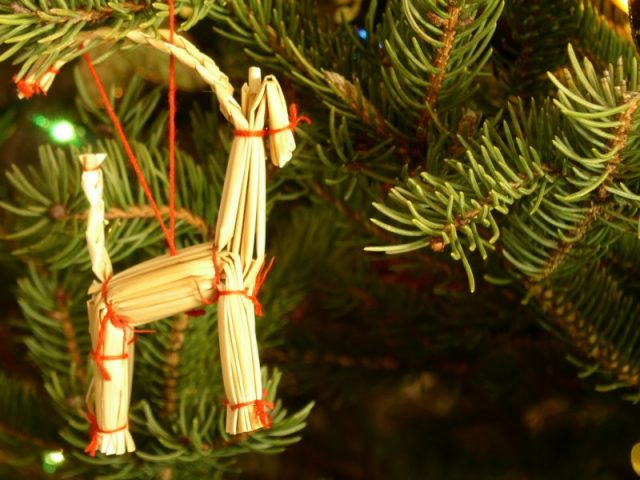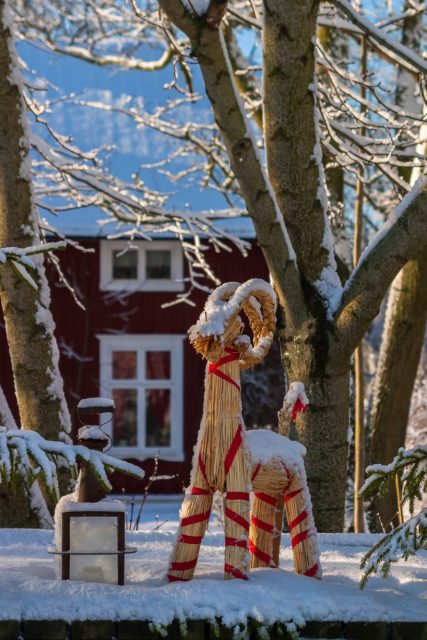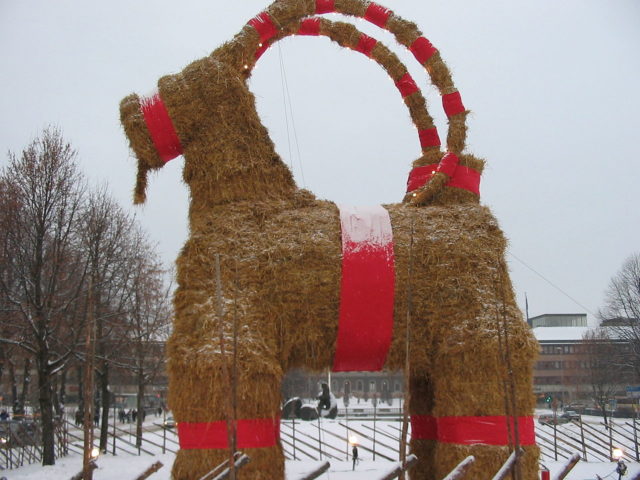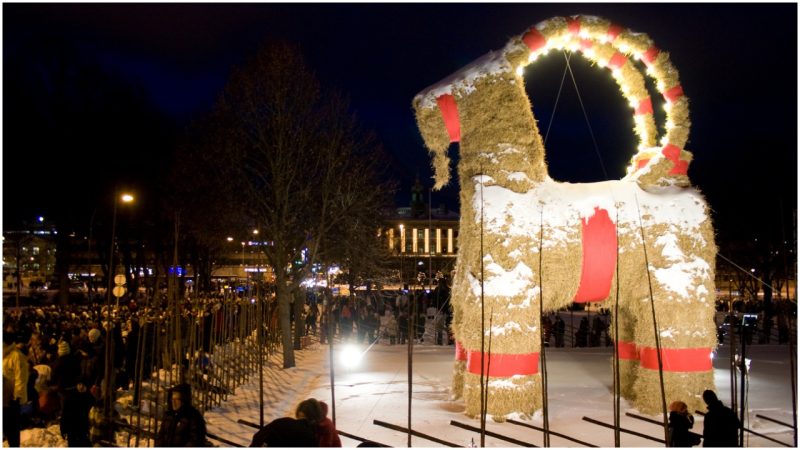All across Scandinavia and Northern Europe, there is a tradition of making straw goat ornaments during the Christmas season. It is believed that this goat symbol is connected to the pagan worship of the Norse god Thor.
In some mythological stories, he is riding a flying chariot drawn by two goats. In the 19th century, the Yule goat became the giver of Christmas gifts, closely related to Santa Claus.
Today, the Yule goat is mostly seen as a straw ornament on Christmas trees, but in some places, people make bigger versions of it. Such is the case with the Yule Goat in the city of Gävle, Sweden. Besides being enormous, this straw-goat figure that is erected annually has an amusing reputation; almost every December, since it was first introduced in 1966, it has been destroyed as a target of arson attacks. As of late November this year, it has been burned down 36 times.
The Yule goat in Gävle is traditionally erected every year on the first day of Advent (late November or early December). This tradition began in 1966, when Stig Gavlén, a local advertising consultant, decided that it would be a good idea to put a giant Yule Goat in the city square. It is a little ironic that the first Gävle was designed and constructed by the chief of the Gävle fire department, Stig’s brother Jörgen Gavlén.

The first Gävle goat, erected on 1 December 1966, was thirteen meters tall, seven meters long, and weighed three tons. The first Yule Goat in Gävle was burnt down on New Year’s Eve. The arsonist who burned it was found and convicted of vandalism.
In subsequent years, the burning of the Gävle Goat became a tradition in its own right. People found ways to approach it and set fire to it. Since 1966, the figure has managed to survive only twelve arson attacks. Luckily, the fire station is close to the location where the goat is erected and, in most cases, they can extinguish the fire before the whole wooden structure is damaged.
The Goat Committee, the group of people responsible for erecting the goat, made a deal that if the goat figure is burned down before December 13th (the day of Saint Lucia), they will repair it and rebuild it.
The Gävle Goat burning in 2001 was quite interesting. The figure was burned by a 51-year-old visitor from Cleveland, Ohio. He claimed that he wasn’t aware he was committing arson, but this didn’t matter much to the authorities in Gävle. He spent 18 days in prison and was sentenced to a fine of 100,000 Swedish kronor for the damage (which he didn’t pay). The court also took his lighter, telling him that he wasn’t responsible enough to carry one.

The folks in Gävle are doing anything to protect their goat from being burned. In 1996, the Southern Merchants (a group of businessmen that sponsor the Yule Goat construction) placed cameras to monitor the goat 24 hours a day, but this didn’t help either. In 2004, the cameras were hacked, and the goat was destroyed. They even posted security guards once, but after the temperature had dropped below zero, the guards went inside a local bar, and the arsonists burned it again. More extreme measures of protection were taken in 2006: they decided to coat the goat with “Fiber ProTector Fireproof,” a fireproofing substance that is used in airplanes. Again, the determined vandals found a way to burn it.

It turns out that building giant Yule Goats is quite popular in Gävle. Since 1986, there have been two different Yule Goats constructed every year: the first made by the Southern Merchants and the second made by the Natural Science Club of the School of Vasa. The two groups are competitive about it. Since 1985, they have been engaged in a constant Goat War. The world record for largest Yule Goat was held by the Southern Merchants, but in 1985 the Natural Science Club built a huge 12.5 meters (41 ft) goat and took the record. Often, there is a sign near the Natural Science Club goat saying: “Merry Christmas to everyone, except the Southern Merchants.”
The Yule Goat struggle in Gävle continues; this year, the goat was burned only a few hours after it was erected. We can only wait to see what will happen next year.
